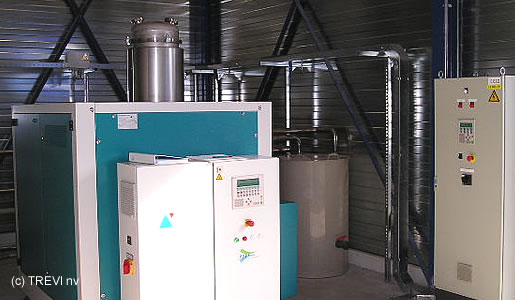Purpose
Extensive purification to condensate quality
Concentration of salts or pollution parameters
Principle
For waste waters that are difficult to treat by means of classical biological or physico-chemical techniques, evaporation is sometimes an alternative. This can allow to minimise residual waste flows that requires external disposal. In an evaporator the non-volatile contamination is concentrated in a limited fraction, where pure water and optionally present volatile substances evaporate and produce a condensate flow. The condensate stream is usually of relatively good quality and can be either reused in the production process or discharged, potentially after a small post-treatment. The concentrate is typically collected for external treatment.
For water treatment there are two basic types of evaporators used:
Vacuum evaporator
Mechanical vapor recompression evaporator
Application
Mostly the concentrated salt stream can not be discharged and requires external processing. In some cases the high salt content can cause corrosion and the appropriate material of installation parts should be considered. Because of the high investment and operating costs evaporation is in most cases only viable for dedicated and relatively small wastewater flows.
Example of realisation
